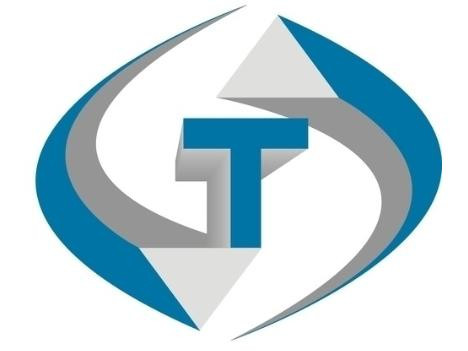
- HongKong Baisite Bearing Co., Ltd
- Global drilling rig Buyer Mud pump bearings High Performance Maintenance-free Industrial Bearings Special Heavy Loading Agricultural Bearing Industry
Home> Company News> Discussion on bearing selection
- AddressKunshan Development Zone,Tsimshatsui Kowloon Hongkong
- Factory AddressKunshan Development Zone,Tsimshatsui Kowloon Hongkong
- Worktime9:00-18:00
- Phone(Working Time)00852- 68532236
- Phone(Nonworking Time)00852- 68532236
- Fax00852- 68532237
Discussion on bearing selection
2018-09-28 17:54:001 Introduction
With the progress and development of society, mechanization has been widely used in production and life. As an indispensable part of the machine, the range of use of the bearing will become wider and wider, as the bearing is used whenever there is a rotation. The bearing is mainly used to support and reduce the friction in the machine, so the accuracy and noise of the bearing are directly related to the use and life of the machine. The following will provide some analysis of the use and selection of bearings for people to use and select bearings correctly.
2 bearing selection
2.1 Bearing model selection
The bearing model is generally selected by the user's technician according to the conditions of use of the accessory product and the load bearing. The business personnel mainly understand whether the actual load of the user is consistent with the selected bearing. If the bearing does not meet the requirements for use, the customer should be advised to re-select the model as soon as possible, but unless the special product is selected on the model, there will be no problem.
2.2 Selection of bearing clearance
When purchasing a bearing, the user generally only informs the model and grade, and rarely asks for the clearance of the bearing. The business personnel must ask about the conditions of use of the bearing, the speed of the bearing, the temperature, and the tolerance of the bearing are directly related to the bearing. The choice of clearance. Motors with a speed of 3,500 rpm or less generally use CM clearance. For example, high-temperature high-speed motors require relatively large clearance. After the assembly, the bearing clearance will be reduced due to the increase of the inner hole and the reduction of the outer circle. The reduction of the clearance = the interference amount × 60% (except for the bearing chamber is aluminum). For example, the clearance before the assembly of the bearing is 0.01 mm, and the interference at the time of assembly is 0.01 mm, and the clearance after the assembly of the bearing is 0.004 mm. In theory, the noise and life of the bearing are at the best state when the bearing is at zero clearance, but in the actual operation, considering the temperature rise and other problems, the clearance of the bearing after assembly is preferably 0.002mm-0.004mm.
2.3 Selection of grease
The choice of grease is generally based on the bearing speed, temperature resistance, noise requirements and starting torque, etc., requiring business personnel to understand the performance of various greases.
2.4 Selection of bearing seal type
Lubrication of bearings can be divided into oil lubrication and grease lubrication. Oil-lubricated bearings are generally selected form bearings, and grease-lubricated bearings are generally sealed with dust caps or rubber seals. The dust cover is suitable for high temperature or good environment. The seal is divided into contact seal and non-contact seal. The contact seal has good dustproof performance but large starting torque. The non-connected seal has small starting torque but sealing performance. No contact is good.
3 Bearing installation and disassembly
The method of installation and disassembly of the bearing shall be based on the structure, size and compatibility of the bearing components. The pressure for installation and disassembly shall be directly applied to the end face of the tightly fitted gear ring, and the pressure shall not be transmitted through the rolling elements. It will cause indentation on the working surface of the bearing, affecting the normal operation of the bearing and even damage the bearing. Bearing cages, seals, dust caps and other parts are easily deformed, and the pressure to install or remove the bearings cannot be applied to these parts.
(1) The inner ring of the bearing is tightly fitted with the shaft, and the outer ring and the housing are loosely fitted. The bearing can be press-fitted on the bearing by a press, and then the shaft is fitted into the housing together with the bearing. A bearing sleeve (copper or soft steel) of a soft metal material is placed on the end face of the bearing. The inner diameter of the fitting sleeve should be slightly larger than the diameter of the journal, and the outer diameter should be smaller than the diameter of the flange of the inner diameter of the bearing to avoid pressing on the cage. A large number of handles can be added to the casing when installing the bearings in large quantities.
When installing the bearing, make the bearing hole and the center line of the shaft coincide. The bearing is not difficult to install relative to the shaft skew, and it can cause indentation, journal bending and even break the inner ring of the bearing.
Where the press is missing or not available, the bearing can be mounted with a mounting sleeve and a small hammer. The hammering force should be evenly transmitted to the entire circumference of the end face of the bearing ring, so the end face of the assembled casing that is hammered should be made spherical.
(2) The bearing outer ring is tightly fitted with the housing hole, and the inner ring and the shaft are loosely fitted, so that the bearing can be pressed into the housing first, and the outer diameter of the assembly sleeve should be slightly smaller than the diameter of the housing hole.
(3) The inner ring of the bearing and the shaft, the outer ring and the housing hole are tightly matched, and the end surface of the assembly sleeve should be made into a ring that can simultaneously press the end surface of the inner ring of the bearing, or a disc and an assembly sleeve can be used to make The pressure is simultaneously transmitted to the inner and outer rings, and the bearing is pressed into the shaft and the housing. This type of mounting method is particularly suitable for the installation of centripetal spherical bearings that can be self-aligning.
(4) Heating installation, the force required to install the bearing is related to the bearing size and the amount of interference. For medium and large bearings with large interference, the hot charging method is commonly used. Before the hot loading, put the bearing or the separable bearing ring into the fuel tank or special heater and heat it evenly to 80~100 °C (not exceeding 100 °C).
Hot-mounted bearings require skilled operating skills. When the bearing is removed from the heating tank or the heater, immediately wipe off the oil traces and attachments on the bearing surface with a clean cloth (not cotton yarn), and then place it in front of the mating surface to push the bearing in one operation. To the position of the shoulder. Always tighten during the cooling process or tap the bearing with a small hammer through the fitting sleeve to make it tight. Slightly rotate the bearing during installation to prevent the installation from tilting or jamming.
When the bearing outer ring and the housing hole are tightly fitted, the housing can also be heated and loaded into the bearing. In particular, in the case of a tight fit of the bearing housing made of light metal, the bearing outer surface may be damaged by the press-in of the bearing outer ring, and the bearing housing should be heated at this time.
4 bearing use precautions
(1) Selection and control of shaft and bearing chamber tolerances: After the bearing is pressed into the bearing, it should be flexible and unobstructed. If the obvious rotation is not flexible, it indicates that the size of the shaft is too large and the tolerance is lowered. If the bearing is pressed into the shaft and turned by hand, there is a clear "sand" feeling, which may be that the tolerance of the shaft is too large or the roundness of the shaft is not good. Therefore, it is necessary to control the roundness when controlling the tolerance of the shaft and the bearing chamber. At present, many domestic manufacturers only control the tolerance and do not control the roundness.
(2) Bearing assembly method: because the bearing is a high-precision product, such as assembly
Improper damage to the bearing channel can result in damage to the bearing. The bearing should have a special mold during assembly. It can't be beaten at will. When pressing the shaft, it can only be pressed in a small circle. When the ring is pressed, it can only be subjected to a large circle. Air pressure or hydraulic pressure is required for assembly. When pressing, the upper and lower molds should be outside the horizontal state. If tilted, the bearing channel will be damaged due to the force, which will cause the bearing to produce a sound.
(3) Prevention of assembly of foreign matter: When the bearing is mounted on the rotor to make dynamic balance, it is easy to enter the iron filings generated during dynamic balancing into the bearing. Therefore, it is better to balance the load before loading the bearing. Some manufacturers have some oil or grease to lubricate the bearing chamber during assembly. However, it is often difficult for the operator to control the amount. If the oil or grease accumulates in the bearing chamber, the bearing is very rotating. Easy to enter the inside of the bearing along the shaft. It is best not to apply oil or grease to the bearing chamber. If it is not painted, it must be controlled not to accumulate in the bearing chamber.
(4) Prevention of paint rust: The characteristic of paint rust is that it is mostly in the sealed motor. The sound of the motor is very good when assembled. However, after some time is put in the warehouse, the abnormal noise of the motor becomes very large, and the bearing is removed. There is severe rust. In the past, many manufacturers considered it to be a bearing problem. After our constant publicity, the motor factory has now realized that it is mainly a problem of insulating varnish. This problem is mainly caused by the fact that the acidic substance volatilized by the insulating paint forms corrosive substances under a certain temperature and humidity, and the bearing channel is corroded and the bearing is damaged. The problem can only be achieved by selecting a good insulating varnish and ventilating it for a period of time after drying.
The life of the bearing is closely related to the manufacture, assembly and use. It must be done at every step in order to keep the bearing in optimal operation and prolong the service life of the bearing.
5 Imported bearings use precautions
Rolling imported bearing gears are precision parts and their use must be carried out with care. No matter how high-performance imported bearings are used, they will not achieve the expected high performance if not used properly. The precautions for the use of imported bearings are as follows.
(1) Keep the imported bearings and their surroundings clean. Even small dust that is invisible to the eyes can have a bad effect on imported bearings. Therefore, keep the area clean so that the dust does not intrude into the imported bearings.
(2) Use with care. In the use of the imported bearings, strong impact, will produce scars and indentations, which is the cause of the accident. In severe cases, it will crack and break, so you must pay attention.
(3) Use the appropriate operating tools. Avoid using existing tools instead and use the right tools.
(4) Pay attention to the corrosion of imported bearings. When operating an imported bearing, the sweat on your hand can become a cause of rust. Be careful to use a clean hand, it is best to wear gloves as much as possible.
6 Low noise bearing application and its solutions
Although this noise is essentially due to manufacturing errors, it is actually related to the choice of lubricant, the mounting conditions of the bearing, and the accuracy of the shaft and housing. This kind of noise is divided into two types: cage sound and vibrating sound, which are described as follows:
(1) Cage sound and its control method Cage sound refers to the periodic vibration and noise emitted by the vibrating cage and the rolling element, which is easy to occur when the pocket is loose and the friction is large. This type of noise mainly occurs in ball bearings and tapered roller bearings, and both the stamped cage and the solid cage occur, which occurs when grease lubrication or oil lubrication occurs, but when the lubrication is poor or the lubricant is dry, the radial travel When the gap is large, when the outer ring is subjected to the moment load, and when the structure of the cage is poor and the precision is not high, it is more likely to occur. In severe cases, the cage web or the rivet head may suddenly break and control the noise and vibration of the cage; Lubricant with good performance; reduce bearing installation error; radial clearance of compression bearing or appropriate axial pre-tightening, and selection of bearings with high precision and reasonable cage, or replacement of the cage is firm and not worn Bearings.
(2) Vibrating sound and its control method The vibrating sound is the noise directly related to the rolling surface waviness of the bearing. This is a kind of pure sound noise. For a constant speed, its frequency does not change, and for the changing speed, Its frequency also changes.
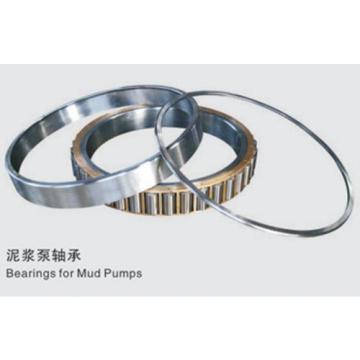 7309BTN/DT French Guiana Bearings Angular Contact Ball Bearing 45x100x50mm
7309BTN/DT French Guiana Bearings Angular Contact Ball Bearing 45x100x50mm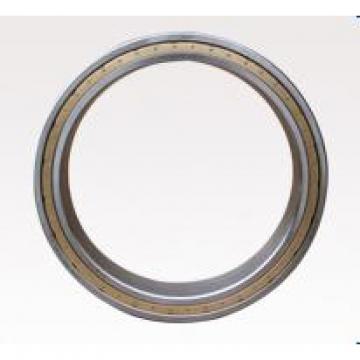 29326E Tuvalu Bearings Bearing 130x225x58mm
29326E Tuvalu Bearings Bearing 130x225x58mm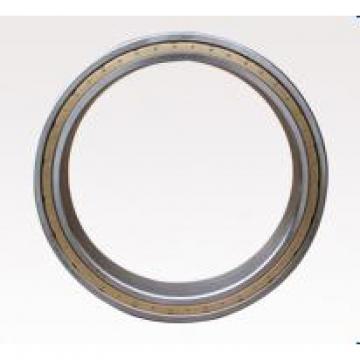 22222CC/W33 uruguay Bearings 22222MB/W33 22222CA/W33 22222E Bearing
22222CC/W33 uruguay Bearings 22222MB/W33 22222CA/W33 22222E Bearing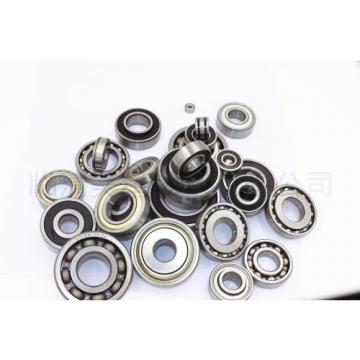 B71932-E-T-P4S Liechtenstein Bearings Bearing 160x220x28mm
B71932-E-T-P4S Liechtenstein Bearings Bearing 160x220x28mm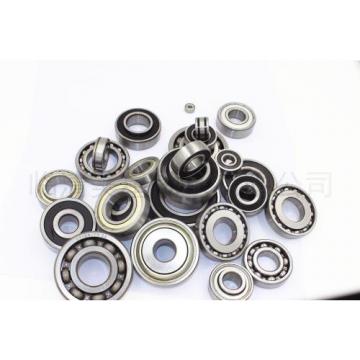 23036CC/W33 Lvory Coast Bearings Spherical Roller Bearing 180mmx280mm X74mm
23036CC/W33 Lvory Coast Bearings Spherical Roller Bearing 180mmx280mm X74mm